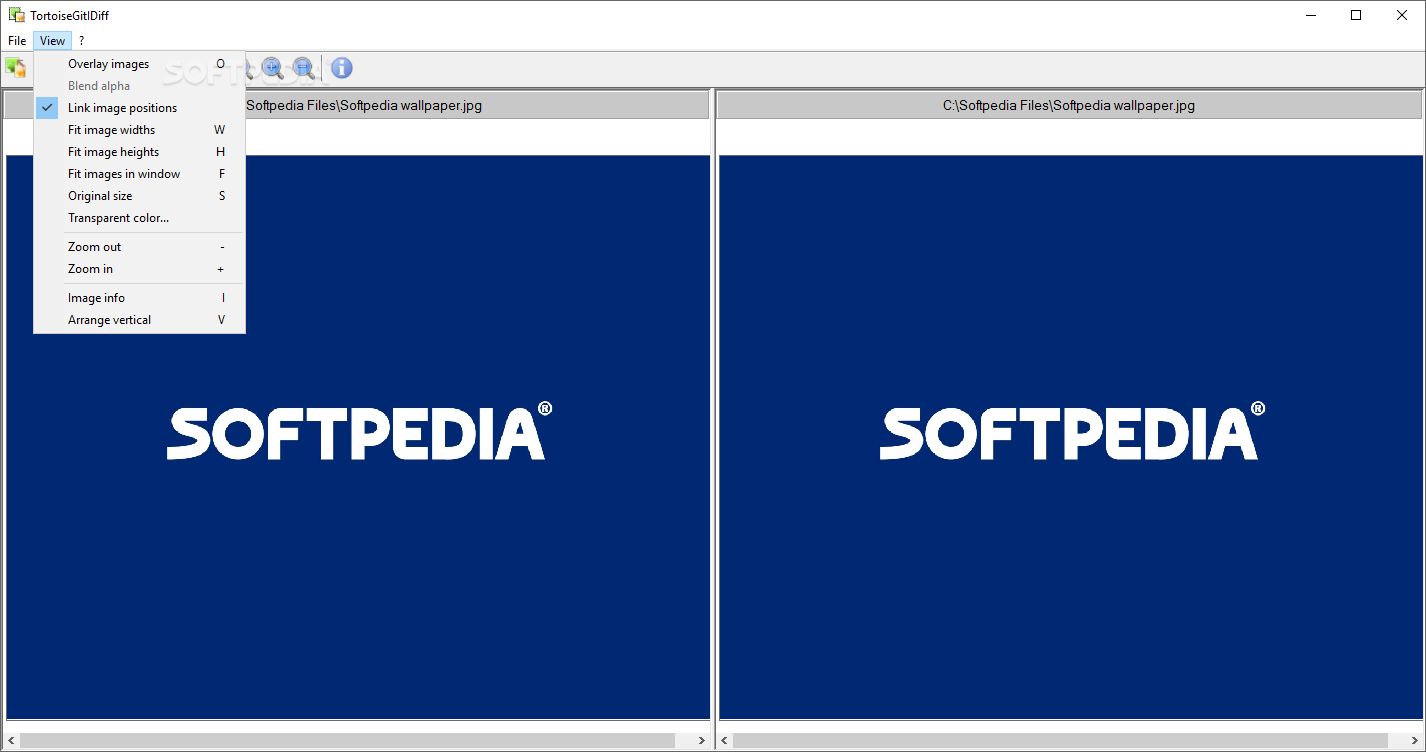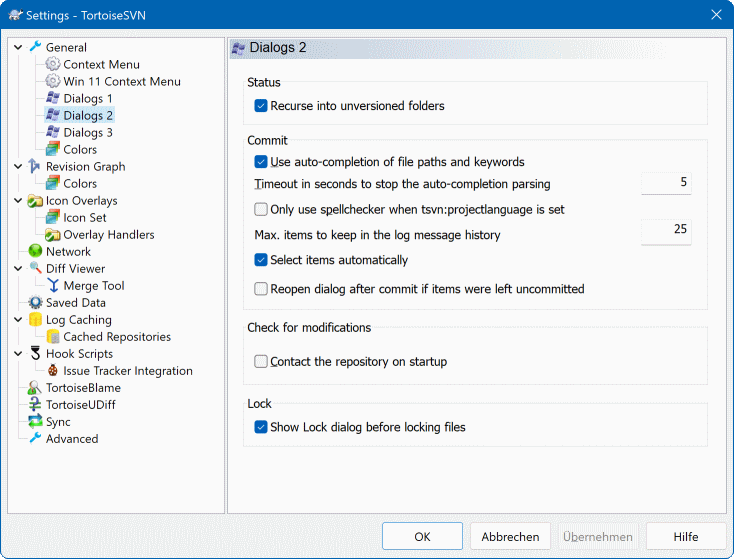
Table of Contents
Sample client hook scripts can be found in the contrib folder in the TortoiseSVN repository. ( the section called “License” explains how to access the repository.) When debugging hook scripts you may want to echo progress lines to the DOS console, or insert a pause to stop the console window disappearing when the script completes. TortoiseSVN is a Subversion client, implemented as a Microsoft Windows shell extension, that helps programmers manage different versions of the source code for their programs. It is free software released under the GNU General Public License. TortoiseSVN won the SourceForge.net 2007 Community Choice Award for Best Tool or Utility for Developers. TortoiseSVN, a Windows shell extension, gives feedback on the state of versioned items by adding overlays to the icons in the Windows Explorer. Repository commands can be executed from the enhanced context menu provided by Tortoise.
- Preface
- What is TortoiseSVN?
- TortoiseSVN's Features
- License
- Development
- TortoiseSVN's History
- Acknowledgments
- Reading Guide
- Terminology used in this document
- 1. Getting Started
- Installing TortoiseSVN
- System requirements
- Installation
- Basic Concepts
- Go for a Test Drive
- Creating a Repository
- Importing a Project
- Checking out a Working Copy
- Making Changes
- Adding More Files
- Viewing the Project History
- Undoing Changes
- Moving On ...
- 2. Basic Version-Control Concepts
- The Repository
- Versioning Models
- The Problem of File-Sharing
- The Lock-Modify-Unlock Solution
- The Copy-Modify-Merge Solution
- What does Subversion Do?
- Subversion in Action
- Working Copies
- Repository URLs
- Revisions
- How Working Copies Track the Repository
- Summary
- 3. The Repository
- Repository Creation
- Creating a Repository with the Command Line Client
- Creating The Repository With TortoiseSVN
- Local Access to the Repository
- Accessing a Repository on a Network Share
- Repository Layout
- Repository Backup
- Server side hook scripts
- Checkout Links
- Accessing the Repository
- 4. Daily Use Guide
- General Features
- Icon Overlays
- Context Menus
- Drag and Drop
- Common Shortcuts
- Authentication
- Maximizing Windows
- Importing Data Into A Repository
- Import
- Import in Place
- Special Files
- Checking Out A Working Copy
- Checkout Depth
- Committing Your Changes To The Repository
- The Commit Dialog
- Change Lists
- Commit only parts of files
- Excluding Items from the Commit List
- Commit Log Messages
- Commit Progress
- Update Your Working Copy With Changes From Others
- Resolving Conflicts
- File Conflicts
- Property Conflicts
- Tree Conflicts
- Getting Status Information
- Icon Overlays
- Detailed Status
- Local and Remote Status
- Viewing Diffs
- Change Lists
- Shelving
- Revision Log Dialog
- Invoking the Revision Log Dialog
- Revision Log Actions
- Getting Additional Information
- Getting more log messages
- Current Working Copy Revision
- Merge Tracking Features
- Changing the Log Message and Author
- Filtering Log Messages
- Statistical Information
- Offline Mode
- Refreshing the View
- Viewing Differences
- File Differences
- Line-end and Whitespace Options
- Comparing Folders
- Diffing Images Using TortoiseIDiff
- Diffing Office Documents
- External Diff/Merge Tools
- Adding New Files And Directories
- Copying/Moving/Renaming Files and Folders
- Ignoring Files And Directories
- Pattern Matching in Ignore Lists
- Deleting, Moving and Renaming
- Deleting files and folders
- Moving files and folders
- Dealing with filename case conflicts
- Repairing File Renames
- Deleting Unversioned Files
- Undo Changes
- Cleanup
- Project Settings
- Subversion Properties
- TortoiseSVN Project Properties
- Property Editors
- External Items
- External Folders
- External Files
- Creating externals via drag and drop
- Branching / Tagging
- Creating a Branch or Tag
- Other ways to create a branch or tag
- To Checkout or to Switch...
- Merging
- Merging a Range of Revisions
- Merging Two Different Trees
- Merge Options
- Reviewing the Merge Results
- Merge Tracking
- Handling Conflicts after Merge
- Feature Branch Maintenance
- Locking
- How Locking Works in Subversion
- Getting a Lock
- Releasing a Lock
- Checking Lock Status
- Making Non-locked Files Read-Only
- The Locking Hook Scripts
- Creating and Applying Patches
- Creating a Patch File
- Applying a Patch File
- Who Changed Which Line?
- Blame for Files
- Blame Differences
- The Repository Browser
- Revision Graphs
- Revision Graph Nodes
- Changing the View
- Using the Graph
- Refreshing the View
- Pruning Trees
- Exporting a Subversion Working Copy
- Removing a working copy from version control
- Relocating a working copy
- Integration with Bug Tracking Systems / Issue Trackers
- Adding Issue Numbers to Log Messages
- Getting Information from the Issue Tracker
- Integration with Web-based Repository Viewers
- TortoiseSVN's Settings
- General Settings
- Revision Graph Settings
- Icon Overlay Settings
- Network Settings
- External Program Settings
- Saved Data Settings
- Log Caching
- Client Side Hook Scripts
- TortoiseBlame Settings
- TortoiseUDiff Settings
- Exporting TSVN Settings
- Advanced Settings
- Final Step
- 5. Project Monitor
- Adding projects to monitor
- Monitor dialog
- Main operations
- 6. The SubWCRev Program
- The SubWCRev Command Line
- Keyword Substitution
- Keyword Example
- COM interface
- 7. IBugtraqProvider interface
- Naming conventions
- The IBugtraqProvider interface
- The IBugtraqProvider2 interface
- A. Frequently Asked Questions (FAQ)
- B. How Do I...
- Move/copy a lot of files at once
- Force users to enter a log message
- Hook-script on the server
- Project properties
- Update selected files from the repository
- Roll back (Undo) revisions in the repository
- Use the revision log dialog
- Use the merge dialog
- Use
svndumpfilter
- Compare two revisions of a file or folder
- Include a common sub-project
- Use svn:externals
- Use a nested working copy
- Use a relative location
- Add the project to the repository
- Create a shortcut to a repository
- Ignore files which are already versioned
- Unversion a working copy
- Remove a working copy
- C. Useful Tips For Administrators
- Deploy TortoiseSVN via group policies
- Redirect the upgrade check
- Setting the
SVN_ASP_DOT_NET_HACKenvironment variable - Disable context menu entries
- D. Automating TortoiseSVN
- TortoiseSVN Commands
- Tsvncmd URL handler
- TortoiseIDiff Commands
- TortoiseUDiff Commands
- E. Command Line Interface Cross Reference
- Conventions and Basic Rules
- TortoiseSVN Commands
- Checkout
- Update
- Update to Revision
- Commit
- Diff
- Show Log
- Check for Modifications
- Revision Graph
- Repo Browser
- Edit Conflicts
- Resolved
- Rename
- Delete
- Revert
- Cleanup
- Get Lock
- Release Lock
- Branch/Tag
- Switch
- Merge
- Export
- Relocate
- Create Repository Here
- Add
- Import
- Blame
- Add to Ignore List
- Create Patch
- Apply Patch
- F. Implementation Details
- Icon Overlays
- G. Language Packs and Spell Checkers
- Language Packs
- Spellchecker
- Glossary
- Index
| Original author(s) | Tim Kemp[1] |
|---|---|
| Initial release | 2002[2] |
| Stable release | 1.14.0 / 27 May 2020; 11 months ago |
| Repository | |
| Written in | C++ |
| Operating system | Microsoft Windows |
| Size | 20.3 MB |
| Type | Subversion client |
| License | GNU General Public License |
| Website | tortoisesvn.net |
TortoiseSVN is a Subversion client, implemented as a Microsoft Windowsshell extension, that helps programmers manage different versions of the source code for their programs. It is free software released under the GNU General Public License.

TortoiseSVN is a free Windows Subversion client. VisualSVN uses TortoiseSVN for most of the dialogs. But 'Add Solution' wizard, 'Get Solution' command and Visual Studio integration (status icons, transparent file operations etc.) do not depend on TortoiseSVN. More information about TortoiseSVN can be found on its web site. Linux tortoise svn client free download. 3CeAM This project is a copy of the eAthena program with added support for 3rd jobs, RE clients, new clien.
TortoiseSVN won the SourceForge.net 2007 Community Choice Award for Best Tool or Utility for Developers.[3]

In Windows Explorer, besides showing context menu items for Subversion commands, TortoiseSVN provides icon overlay that indicates the status of Subversion working copies.
It also comes with the TortoiseMerge utility, available from Tigris.org website, to visually compare two files.[4]
TortoiseSVN can be integrated into Microsoft Visual Studio by using a third-party plugin such as VsTortoise.
A third-party repository monitoring application using TortoiseSVN was named SVN-Monitor, then evolved into Vercue in 2011.[5]
TortoiseSVN 1.9 and later requires at least Windows Vista or later.
Tortoisesvn Client For Ubuntu Download
See also[edit]
- RabbitVCS, a similar tool available on Linux
- TortoiseBzr, a similar tool for use with Bazaar
- TortoiseCVS, a similar tool for use with CVS that TortoiseSVN is based on.
- TortoiseGit, a similar tool for use with Git
- TortoiseHg, a similar tool for use with Mercurial
References[edit]
- ^History
- ^Status
- ^'SourceForge.net 2007 Community Choice Awards'. SourceForge.net. 2007. Retrieved 2011-10-29.
- ^'tortoisesvn: TortoiseMerge - a text diff tool'. Tigris.org website. Retrieved 2011-10-29.
- ^Adrian Aisemberg. 'SVN-Monitor'. Archived from the original on 2011-01-28. Retrieved 2011-10-29.
External links[edit]

| Wikimedia Commons has media related to TortoiseSVN. |